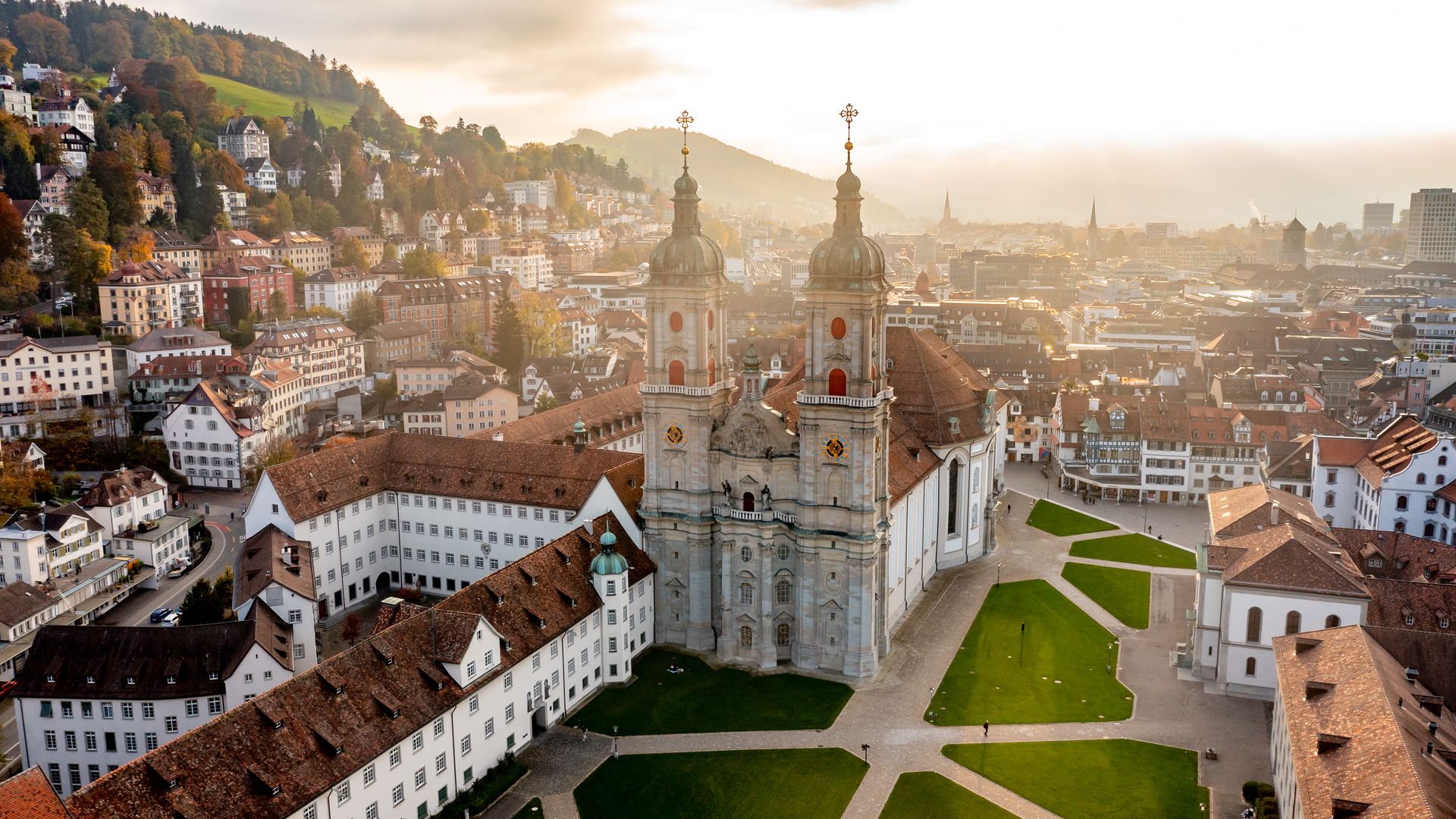St. Gallen Monastery
The spiritual center of Europe
In the year 719 – about a century after the arrival of the Irish itinerant monk Gallus – Otmar revived the Gallus settlement. From it emerged the Abbey of St. Gallen, which, with its impressive twin-towered cathedral, became one of the most important spiritual centres in Europe. For centuries, it was a place of cultural influence and intellectual development.
Numerous manuscripts and documents from this flourishing period have been preserved – central sources for the study of the Early Middle Ages. Among the most valuable treasures are the famous Plan of St. Gall, the oldest preserved architectural drawing in Europe, and the oldest known German-language dictionary.
Many of the medieval manuscripts were written in the abbey itself and have remained in St. Gallen to this day. A particular attraction is the Abbey Library, built in 1758, considered one of the most beautiful historic library halls in the world. Its collection continues to grow and currently comprises around 170,000 volumes.
Outstanding objects in the collection include a two-metre-high terrestrial globe from the 16th century and the Egyptian mummy Schepenese, which has been in the library’s possession since 1836 along with her sarcophagi. Her life is dated to between 650 and 610 BCE.
Architecturally too, the library is a baroque masterpiece: a curved hall with intricate inlaid wooden floors, panelled bookcases, delicate columns and richly stuccoed ceilings.
Since 1983, the Abbey District of St. Gallen, together with the Abbey Library, has been officially recognised as a UNESCO World Heritage Site – a testament to the unique interplay of architecture, knowledge and cultural history.
And St. Gallen has even more to offer
As soon as you leave the venerable walls of the Abbey District behind, a new chapter of discovery begins. St. Gallen surprises with contrasts – wild and romantic, sensual and witty, down-to-earth and full of indulgence.
Whether you’re hiking through the enchanted Mülenen Gorge, enjoying the tranquillity at one of the «Drei Weieren» ponds, or setting out on a culinary journey between brewery kettles and bratwurst – the city tells its stories in ever new ways.
Some tours take you high above the rooftops, up stairways steeped in history and stories. Others invite you to explore the old town with a wink or take part in a tasting where it’s quite literally «all about the sausage».
And those who think Eastern Switzerland lacks humour simply haven’t seen the «wild East» from its funniest side.
Between laughter lines and moments of indulgence, old town legends and fondue backpacks – St. Gallen is waiting to be discovered by you, in all its surprising facets.
